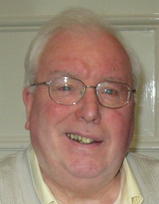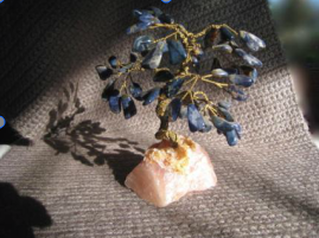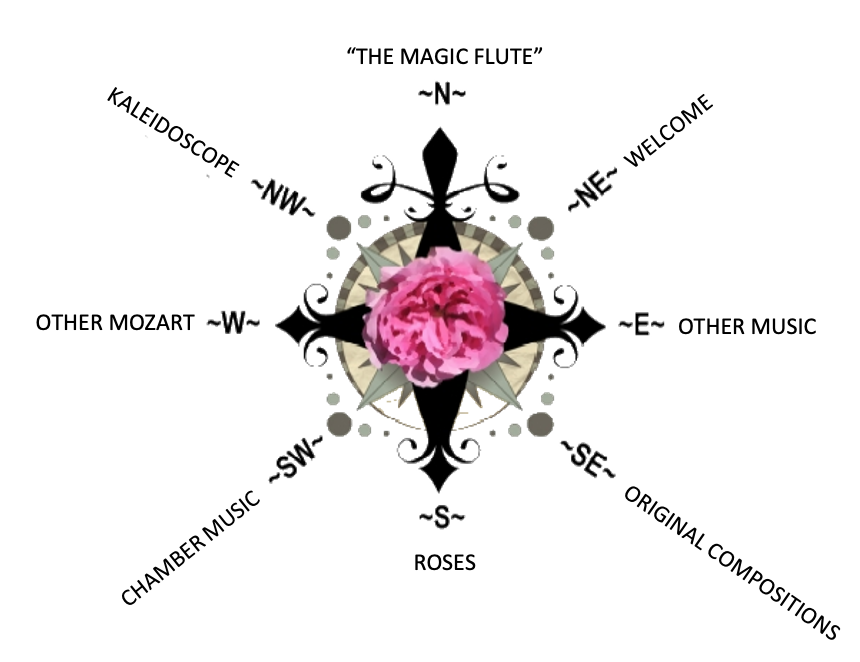- Home
- N - The Magic Flute
- NE - Welcome!
-
E - Other Music
- E - Music Genres >
- E - Composers >
-
E - Extended Discussions
>
- Allegri: Miserere
- Bach: Cantata 4
- Bach: Cantata 8
- Bach: Chaconne in D minor
- Bach: Concerto for Violin and Oboe
- Bach: Motet 6
- Bach: Passion According to St. John
- Bach: Prelude and Fugue in B-minor
- Bartok: String Quartets
- Brahms: A German Requiem
- David: The Desert
- Durufle: Requiem
- Faure: Cantique de Jean Racine
- Faure: Requiem
- Handel: Christmas Portion of Messiah
- Haydn: Farewell Symphony
- Liszt: Évocation à la Chapelle Sistine"
- Poulenc: Gloria
- Poulenc: Quatre Motets
- Villa-Lobos: Bachianas Brazilieras
- Weill
-
E - Grace Woods
>
- Grace Woods: 4-29-24
- Grace Woods: 2-19-24
- Grace Woods: 1-29-24
- Grace Woods: 1-8-24
- Grace Woods: 12-3-23
- Grace Woods: 11-20-23
- Grace Woods: 10-30-23
- Grace Woods: 10-9-23
- Grace Woods: 9-11-23
- Grace Woods: 8-28-23
- Grace Woods: 7-31-23
- Grace Woods: 6-5-23
- Grace Woods: 5-8-23
- Grace Woods: 4-17-23
- Grace Woods: 3-27-23
- Grace Woods: 1-16-23
- Grace Woods: 12-12-22
- Grace Woods: 11-21-2022
- Grace Woods: 10-31-2022
- Grace Woods: 10-2022
- Grace Woods: 8-29-22
- Grace Woods: 8-8-22
- Grace Woods: 9-6 & 9-9-21
- Grace Woods: 5-2022
- Grace Woods: 12-21
- Grace Woods: 6-2021
- Grace Woods: 5-2021
- E - Trinity Cathedral >
- SE - Original Compositions
- S - Roses
-
SW - Chamber Music
- 12/93 The Shostakovich Trio
- 10/93 London Baroque
- 3/93 Australian Chamber Orchestra
- 2/93 Arcadian Academy
- 1/93 Ilya Itin
- 10/92 The Cleveland Octet
- 4/92 Shura Cherkassky
- 3/92 The Castle Trio
- 2/92 Paris Winds
- 11/91 Trio Fontenay
- 2/91 Baird & DeSilva
- 4/90 The American Chamber Players
- 2/90 I Solisti Italiana
- 1/90 The Berlin Octet
- 3/89 Schotten-Collier Duo
- 1/89 The Colorado Quartet
- 10/88 Talich String Quartet
- 9/88 Oberlin Baroque Ensemble
- 5/88 The Images Trio
- 4/88 Gustav Leonhardt
- 2/88 Benedetto Lupo
- 9/87 The Mozartean Players
- 11/86 Philomel
- 4/86 The Berlin Piano Trio
- 2/86 Ivan Moravec
- 4/85 Zuzana Ruzickova
-
W - Other Mozart
- Mozart: 1777-1785
- Mozart: 235th Commemoration
- Mozart: Ave Verum Corpus
- Mozart: Church Sonatas
- Mozart: Clarinet Concerto
- Mozart: Don Giovanni
- Mozart: Exsultate, jubilate
- Mozart: Magnificat from Vesperae de Dominica
- Mozart: Mass in C, K.317 "Coronation"
- Mozart: Masonic Funeral Music,
- Mozart: Requiem
- Mozart: Requiem and Freemasonry
- Mozart: Sampling of Solo and Chamber Works from Youth to Full Maturity
- Mozart: Sinfonia Concertante in E-flat
- Mozart: String Quartet No. 19 in C major
- Mozart: Two Works of Mozart: Mass in C and Sinfonia Concertante
- NW - Kaleidoscope
- Contact
DR. ALFRED WHITTAKER
QUESTION: How does a British geologist of major standing end up in collaboration with an American music historian whose primary research focus is Mozart’s Magic Flute?
ANSWER: Why, through the work of a Hungarian-American metallurgist and physicist, of course!
The characters other than myself in this unusual saga are Alfred Whittaker, the aforementioned geologist, and the late Andrew (Andràs) Lux (1921-2008), the metallurgist/physicist. The kaleidoscopic chain of events by which we all met is briefly this:
ANSWER: Why, through the work of a Hungarian-American metallurgist and physicist, of course!
The characters other than myself in this unusual saga are Alfred Whittaker, the aforementioned geologist, and the late Andrew (Andràs) Lux (1921-2008), the metallurgist/physicist. The kaleidoscopic chain of events by which we all met is briefly this:
In February 1985 I received a charming polite letter, accompanied by an article on Ignaz von Born and a 1786 metallurgical conference, from Andrew Lux. Mr. Lux congratulated me on the publication of my translation of the libretto of The Magic Flute (The Edwin Mellen Press, 1979) and commended the enclosed article to me especially as von Born had been head of the Mining Institute in Hungary where he, Andrew Lux, had also studied. Von Born was, famously, the leader of the Masonic community in the 1780s in Vienna, and was by many considered to be the model for Sarastro in The Magic Flute. That Mr. Lux knew the opera and was aware of von Born’s association with it intrigued me, and I responded to him by enclosing an interpretation of the work by Dorothy Koenigsberger, whose approach was from the history of science. Thus began what would be more than 20 years of correspondence and meetings between Mr. Lux and myself. He rightly named our association an “Academy”, meaning in the old sense a gathering of interested amateurs who presented their research to each other. We soon graduated to first-name basis. Andy was more than generous in providing me with articles from scientific meetings and journals, even his own presentations to prestigious societies, so that I became much more familiar with the scientific community that surrounded Mozart. I also invited him to present his scientific information in one of my seminars in 1983, bringing his ideas to a new generation.
Our Academy expanded by one in summer, 1991, after Andy sent me an interesting article from Terra Nova, the journal of the European Association of Exploration Geophysicists, which was reporting on its Wiesbaden convention in April of that year. Accompanying the article was a copy of the letter written to Andy by its author, Alfred Whittaker, discussing scientific connections to The Magic Flute. I soon contacted Dr. Whittaker, who had been forewarned of my approach, I think, by Andy. Very quickly Dr. Whittaker and I exchanged messages and were soon on a first-name basis. It is nothing short of amazing to me that Alf had seen a number of the details in the early Rosicrucian documents that I had already laboriously teased out for the book I was preparing for publication. (That book, The Cultural Context of Mozart’s “Magic Flute” [The Edwin Mellen Press, 1991], went to the publisher less than a month after I had received Andy’s first notice of Alf’s work.) And thus began what has been another joyful association, collaboration, and friendship, with Alf and his wife Jane, which I am happy to say still continues.
Alf’s layer of information about geoscience has enormously enhanced my understanding of The Magic Flute and its original creators and performers. Specifically, the alchemical connection to the opera became clear in the transcript of the BBC radio program in which Alf had participated and in his “Mineralogy and Magic Flute” (which is available in this section of “Kaleidoscope”). Alf had also begun extensive research on Karl Ludwig Giesecke, a highly respected mineralogist in the latter part of his life and, earlier, directly involved in the first production of The Magic Flute in Vienna. Alf’s work had to be brought to this country, I believed, so I invited him to present a session within my Spring 2000 seminar on The Magic Flute at Cleveland State University, with great success. Thereafter, Alf continued his research and publication on Giesecke, providing much evidence of Giesecke’s hand in creating the libretto of the opera. (Were I to write my book today my conclusions on that matter would be quite different from what they were in 1991!)
So it is with great pleasure that I am able to introduce Alfred Whittaker and his work on this website, and to provide the article that introduced me to the extensive mineralogical connections in The Magic Flute. Alf has kindly provided the document in its published format, including illustrations.
I am happy to say that Alf has made two additional articles available for MozartsRoses. The first, “Karl Ludwig Giesecke: His Albums and His likely Involvement in the Writing of the Libretto of Mozart’s Opera The Magic Flute” (2009), represents a huge contribution to our knowledge of this formerly shadowy scientist-cum-theater figure. In the article, Alf reports on the contents of three of Giesecke’s own diaries, or albums, which document a number of instances of reference to the opera’s libretto.
The second new addition to the site is Alf’s “Some Central European Geoscientists of the 18th Century and Their Influence on Mozart’s Music” (2010). Among the scientists are Rudolph Erich Raspe (most popularly known for his Baron von Münchausen tales but more important for his contributions to earth science and connections with other scientists related to Mozart), Karl Ludwig Giesecke, and the great Ignaz von Born, arguably the leading scientist of his day. The wealth of insights and connections which Alf presents helps us recognize the very broad cultural connections that are present in Mozart’s Magic Flute.
Many thanks, Alf Whittaker, for helping us to better understand Mozart’s time and his timeless opera.
J. E.
Our Academy expanded by one in summer, 1991, after Andy sent me an interesting article from Terra Nova, the journal of the European Association of Exploration Geophysicists, which was reporting on its Wiesbaden convention in April of that year. Accompanying the article was a copy of the letter written to Andy by its author, Alfred Whittaker, discussing scientific connections to The Magic Flute. I soon contacted Dr. Whittaker, who had been forewarned of my approach, I think, by Andy. Very quickly Dr. Whittaker and I exchanged messages and were soon on a first-name basis. It is nothing short of amazing to me that Alf had seen a number of the details in the early Rosicrucian documents that I had already laboriously teased out for the book I was preparing for publication. (That book, The Cultural Context of Mozart’s “Magic Flute” [The Edwin Mellen Press, 1991], went to the publisher less than a month after I had received Andy’s first notice of Alf’s work.) And thus began what has been another joyful association, collaboration, and friendship, with Alf and his wife Jane, which I am happy to say still continues.
Alf’s layer of information about geoscience has enormously enhanced my understanding of The Magic Flute and its original creators and performers. Specifically, the alchemical connection to the opera became clear in the transcript of the BBC radio program in which Alf had participated and in his “Mineralogy and Magic Flute” (which is available in this section of “Kaleidoscope”). Alf had also begun extensive research on Karl Ludwig Giesecke, a highly respected mineralogist in the latter part of his life and, earlier, directly involved in the first production of The Magic Flute in Vienna. Alf’s work had to be brought to this country, I believed, so I invited him to present a session within my Spring 2000 seminar on The Magic Flute at Cleveland State University, with great success. Thereafter, Alf continued his research and publication on Giesecke, providing much evidence of Giesecke’s hand in creating the libretto of the opera. (Were I to write my book today my conclusions on that matter would be quite different from what they were in 1991!)
So it is with great pleasure that I am able to introduce Alfred Whittaker and his work on this website, and to provide the article that introduced me to the extensive mineralogical connections in The Magic Flute. Alf has kindly provided the document in its published format, including illustrations.
I am happy to say that Alf has made two additional articles available for MozartsRoses. The first, “Karl Ludwig Giesecke: His Albums and His likely Involvement in the Writing of the Libretto of Mozart’s Opera The Magic Flute” (2009), represents a huge contribution to our knowledge of this formerly shadowy scientist-cum-theater figure. In the article, Alf reports on the contents of three of Giesecke’s own diaries, or albums, which document a number of instances of reference to the opera’s libretto.
The second new addition to the site is Alf’s “Some Central European Geoscientists of the 18th Century and Their Influence on Mozart’s Music” (2010). Among the scientists are Rudolph Erich Raspe (most popularly known for his Baron von Münchausen tales but more important for his contributions to earth science and connections with other scientists related to Mozart), Karl Ludwig Giesecke, and the great Ignaz von Born, arguably the leading scientist of his day. The wealth of insights and connections which Alf presents helps us recognize the very broad cultural connections that are present in Mozart’s Magic Flute.
Many thanks, Alf Whittaker, for helping us to better understand Mozart’s time and his timeless opera.
J. E.
Essays by Alfred Whittaker
(Click for direct link to essay)
Mineral Tree
|
The charming mineral tree—was a gift from Alf and his wife Jane when visiting me in 2000. The base of the tree is rose quartz. The leaves are sodalite, a mineral discovered by Karl Ludwig Giesecke between 1806 and 1808 during his long sojourn in Greenland when he was exploring the mineral reources and, incidently, flora on the west coast of that island.
|
Choose Your Direction
The Magic Flute, II,28.




